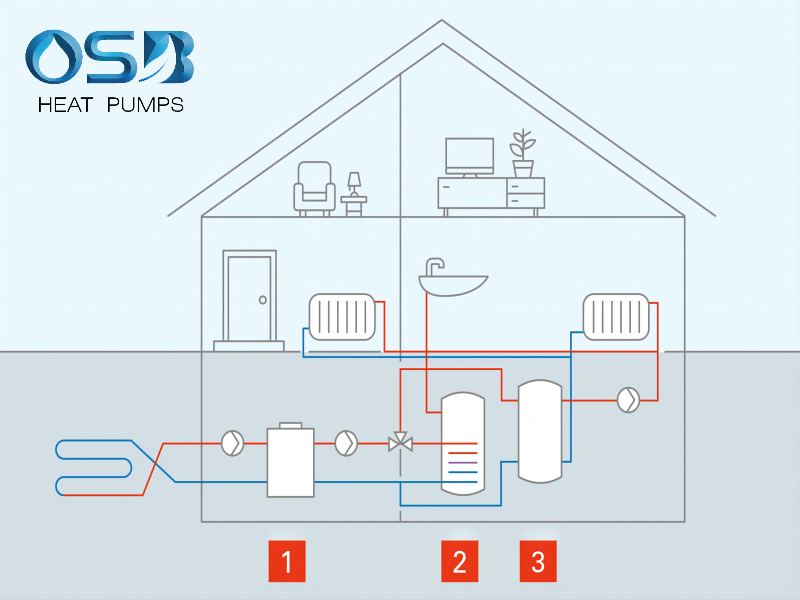The function of a geothermal heat pump can be compared to that of a refrigerator, only in reverse. Where a fridge removes heat to cool its interior, a geothermal heat pump taps into the heat in the ground to heat the inside of a building.
Air-to-water heat pumps and water-to-water heat pumps also use the same principle, the only difference being that they use heat from the ambient air and ground water respectively.
Liquid-filled pipes are laid underground to enable the heat pump to utilise geothermal heat. These pipes contain a solution of salt, also referred to as brine, which prevents them from freezing. For this reason, experts often call geothermal heat pumps “brine heat pumps”. The proper term is brine-to-water heat pump. The brine draws heat from the ground, and the heat pump transfers the heat to the heating water.
Sources for brine-to-water heat pumps can be up to 100 metres deep in the ground. This is known as near-surface geothermal energy. In contrast, conventional geothermal energy can tap into sources that are many hundreds of metres deep and is used to generate electricity.
Which types of geothermal heat pumps and what sources are available?
Installation
As a rule, geothermal heat pumps are designed for indoor installation in the boiler room. Some models are also suitable for outdoor installation to save space in the boiler room.
Geothermal probes
Geothermal probes can stretch up to 100 metres down into the ground depending on the thermal conductivity of the soil and heating requirements of the house. Not every substrate is suitable, such as rock. A specialist company must be employed to drill the holes for the geothermal probes.
As geothermal heat pumps that use geothermal probes draw the heat from greater depths, they can also use higher source temperatures and achieve optimum efficiency.
Geothermal collectors
Instead of installing geothermal probes that extend deep into the ground, you can alternatively use geothermal collectors. Geothermal collectors are brine pipes that heating system experts install in your garden in loops. They are usually buried only 1.5 metres down.
In addition to conventional geothermal collectors, prefabricated models in the form of baskets or ring trenches are also available. These types of collector save space as they are three-dimensional instead of two-dimensional.
Post time: Mar-14-2023


